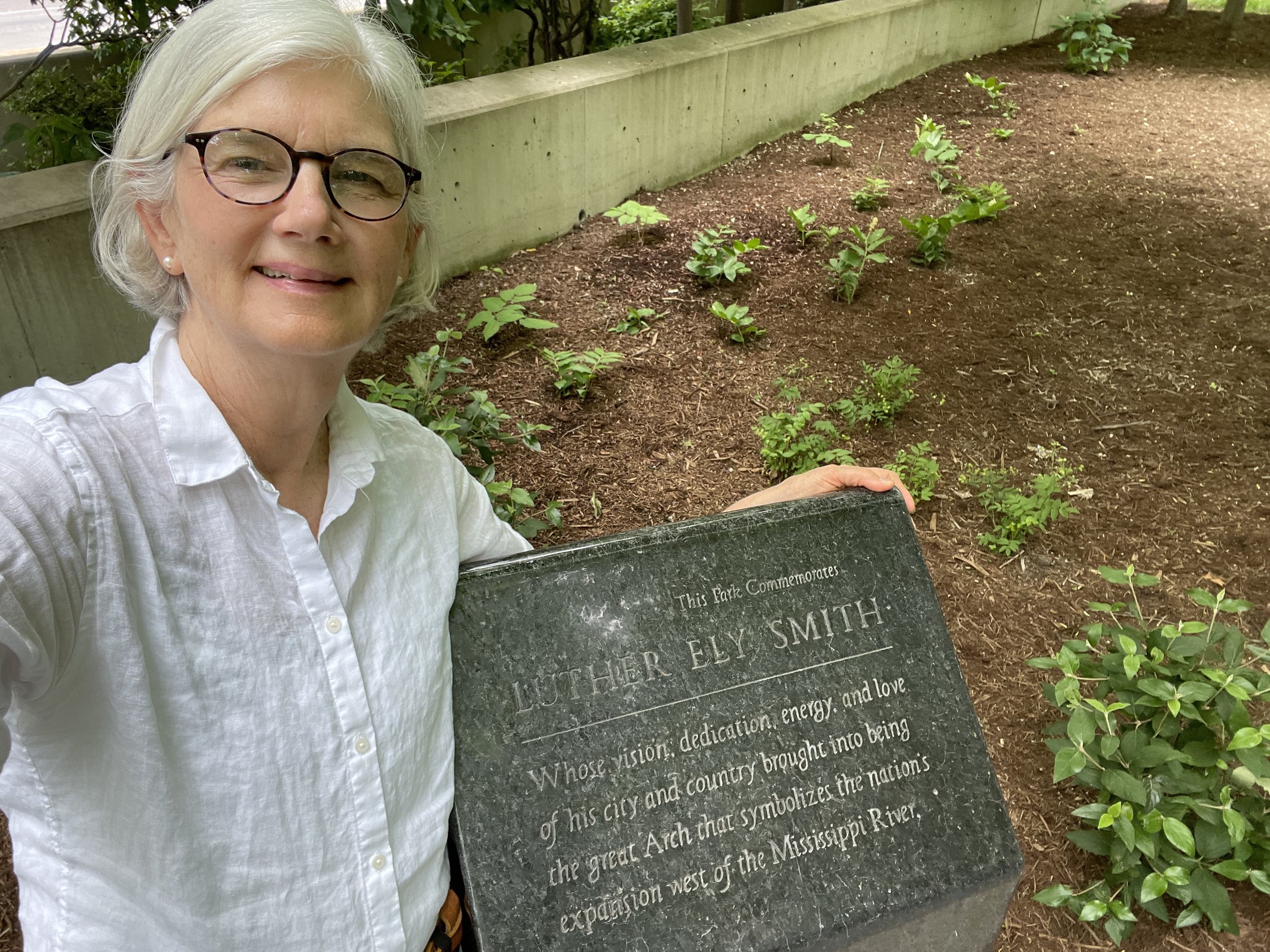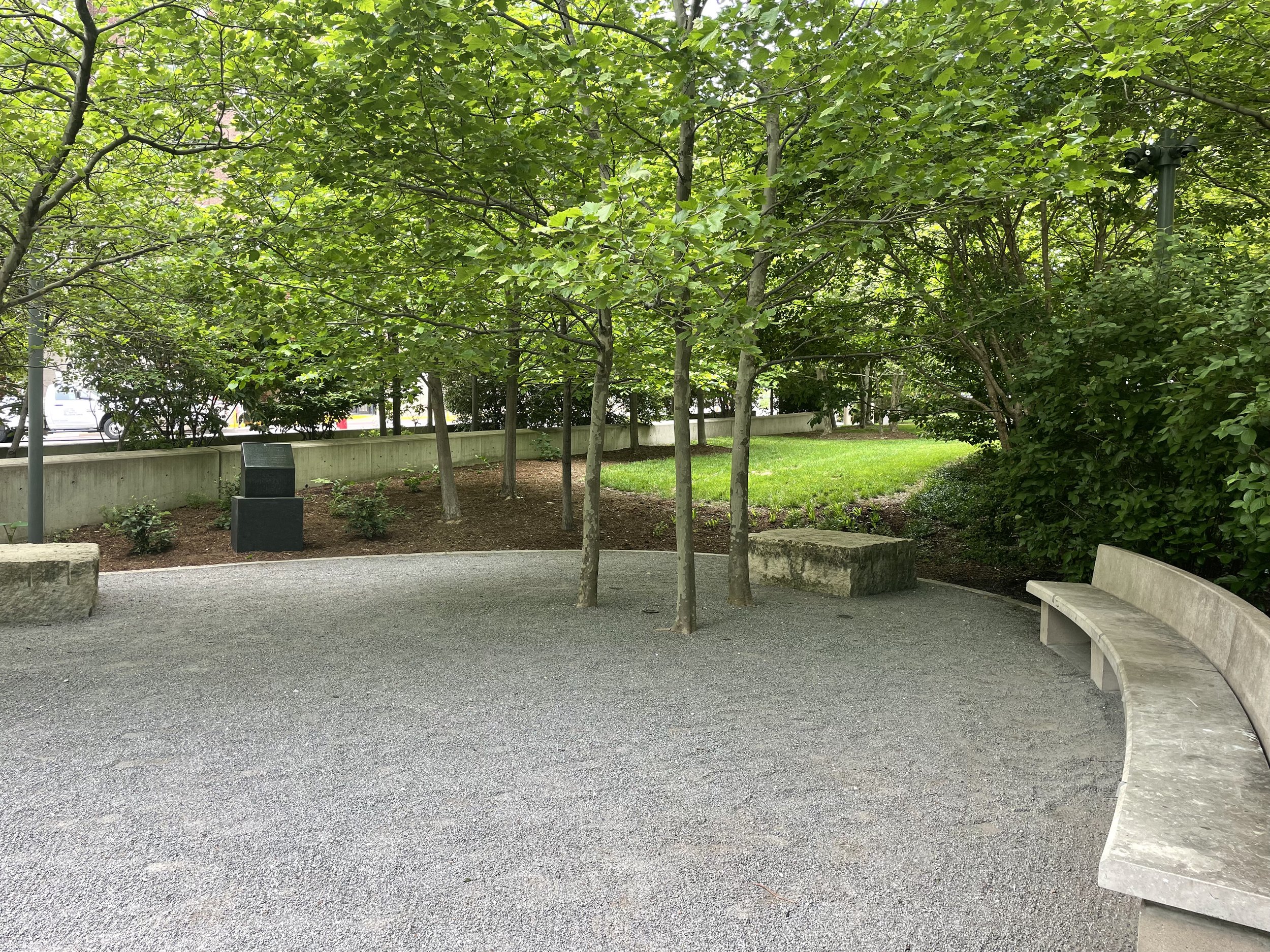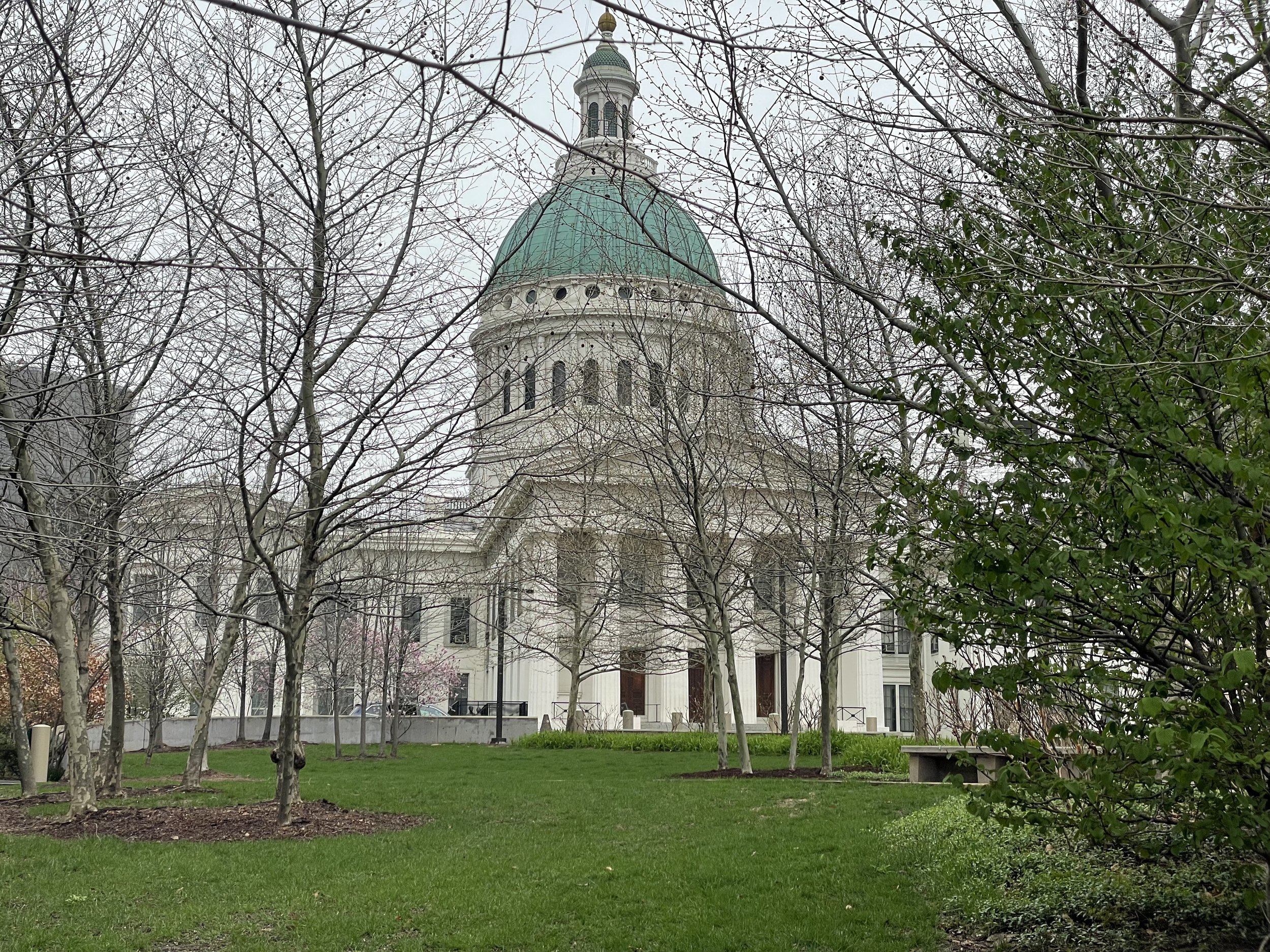Marker for Luther Ely Smith in an interior garden of Luther Ely Smith Square
We were recently in St. Louis where we visited the newly installed marker dedicated to my grandfather, Luther Ely Smith, on the grounds of the Gateway Arch National Park. The marker has been there since 1970 when the city dedicated a park to him. During the restructuring of the Arch grounds the marker was moved. My family recently arranged to have it located in a quiet spot in an interior garden of what is now called, Luther Ely Smith Square. The marker is engraved with these words:
This Park commemorates Luther Ely Smith, whose vision, dedication, energy, and love of his city and country brought into being the great Arch that symbolizes the nation’s expansion west of the Mississippi River.
Luther Ely Smith Square
On the website of the Gateway Arch National Park, Luther Ely Smith Square is described as the beautifully landscaped green space that leads to the entrance of the Arch. Born in 1873, Luther Ely Smith was a St. Louis lawyer… who first proposed a riverfront memorial for President Thomas Jefferson. His efforts led to the creation of the Gateway Arch. Today, Luther Ely Smith Square welcomes visitors to the Gateway Arch National Park, where they enjoy the unique plantings, picnic areas,…and benches with the Arch or Old Courthouse serving as a backdrop.
The Old Courthouse, St. Louis. Missouri
My grandfather’s Amherst College classmate, who was then president of the United States, Calvin Coolidge, appointed him to a commission to supervise the design and construction of a monument in Vincennes, Indiana. On his train trip home, as he crossed the river, he envisioned a revitalized riverfront and a monument that would commemorate this place as the gateway to westward expansion, to Thomas Jefferson, and the journey of Lewis and Clark.
My grandfather dedicated himself to this vision, working over thirty years with the city of St. Louis and the federal government to realize this dream. He was appointed by Mayor Bernard Dickmann to be the chairman of the committee to investigate a monument. The committee was developed as the Jefferson National Expansion Memorial Association and was formally chartered in April 1934. President Franklin D. Roosevelt signed an executive order on December 21, 1935, authorizing the Department of Interior to acquire and develop the memorial.
In 1949, the Association selected the design for the Gateway Arch by Eero Saarinen following a design competition.
In 1948 Grandpa wrote to contest winner Eero Saarinen, an architect from Finland:
It was your design, your marvelous conception, your brilliant forecast into the future, that has made the realization of the dream possible – a dream that you and the wonderful genius at your command and the able assistance of your associates are going to achieve far beyond the remotest possibility that we had dared visualize in the beginning.
Eero Saarinen and Luther Ely Smith
Our grandfather died in April, 1951 and the Arch was completed in 1965. He never saw it, but he knew it would be built and could imagine it.
On April 3, 1951, the St. Louis Post Dispatch published an editorial entitled, What a Life Can Be about my grandfather.
The editorial describes many of the efforts that he championed like The Missouri Plan, also known as the Non-Partisan Court Plan, which spread far beyond Missouri and is the foundation for merit-based judicial selection in America. He led the commission for the development of the city’s first public playgrounds. In 1920, he represented hundreds of St. Louis citizens who were immigrants when they were about to be deported for unjust reasons. More than anything, he cared for and worked for the liberties of free men [and women.] Any report of oppression found him ready to learn more and act accordingly.
Another editorial and letters to the editor in the St. Louis Star-Times include these stories and words.
From every city hundreds of these people were rushed to New York and shipload after shipload of them were sent back to Europe in the successful coup of the Palmer Red Raids. Except that none went from St. Louis. We have a thousand loyal, patriotic citizens, who but for [Luther Ely Smith], would be disseminated throughout Europe.
Luther Ely Smith’s influence was vast-the finest and most enduring kind, that of character, integrity, and skill in human relations….Most of all, Luther Ely Smith was known as a person, a great, lovable, wise and gracious person. He leaves a heritage to the entire city of St. Louis.
I did not know my grandfather. He died in 1951 when I was just two years old. I do, however, feel his legacy and the example of his life deep in my bones. I love hearing stories about him. My older brother and sisters knew him well and remember bird walks and picnics with him in Forest Park and the St. Louis Zoo. I am awestruck reading about him and what he was like and what he accomplished. Likewise, I am filled with wonder when I see the Arch from any vantage point. It is awe inspiring in its simplicity, its strength, and its openness to the future and possibility.
These days, especially this week, when our country seems so very down and out, so full of grief and shame about what we have allowed to happen with gun violence where no one, not even young children in school, is safe. What are we to do? How do we gather ourselves and move on?
I am buoyed by people like my grandfather who do not lose hope and continue to work for justice and good through many challenging and difficult times. I listened to Sharon Salzberg speak on a Community Vigil through Insight Meditation Society a couple of days ago. She said that to fall into helplessness is the hardest and most dangerous place. We need to feel our deep connection to one another and know that our kindness, our care, our action means something and will affect everything.
So that is what I am doing. I am staying connected and I am believing that our country can and must do better and that I can and will play a part in that. That gun safety regulations and laws will be established and that we will not be terrorized by the powers that be that are standing in the way.
This Memorial weekend, I am remembering all who died for our freedom. (Heather Cox Richardson writes a moving story today about Beau Bryant who died in 1943 at age 20, giving up “not only his life but also his future to protect American democracy against the spread of facism.”)
And I am also praying that we will have the strength of will and heart to find our way out of the darkness of violence that we have created… that is far away from freedom.
Sending many blessings to each of you always.
Gateway Arch, image from the website





